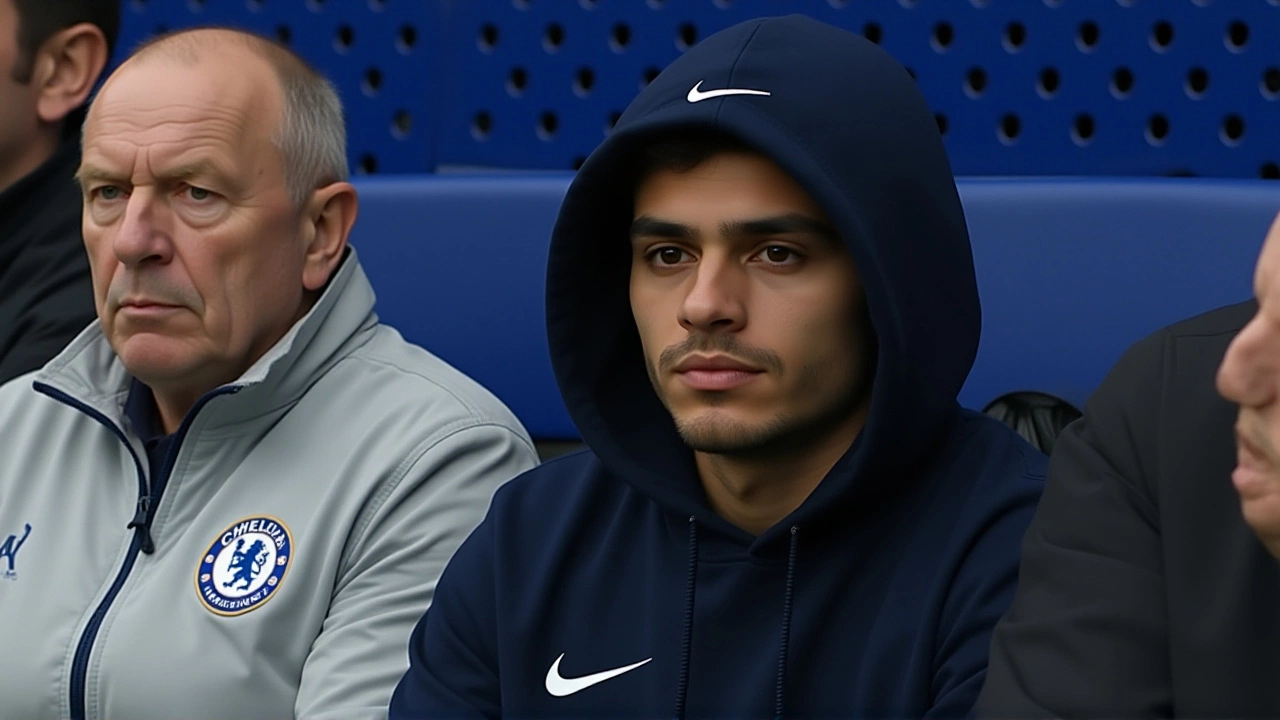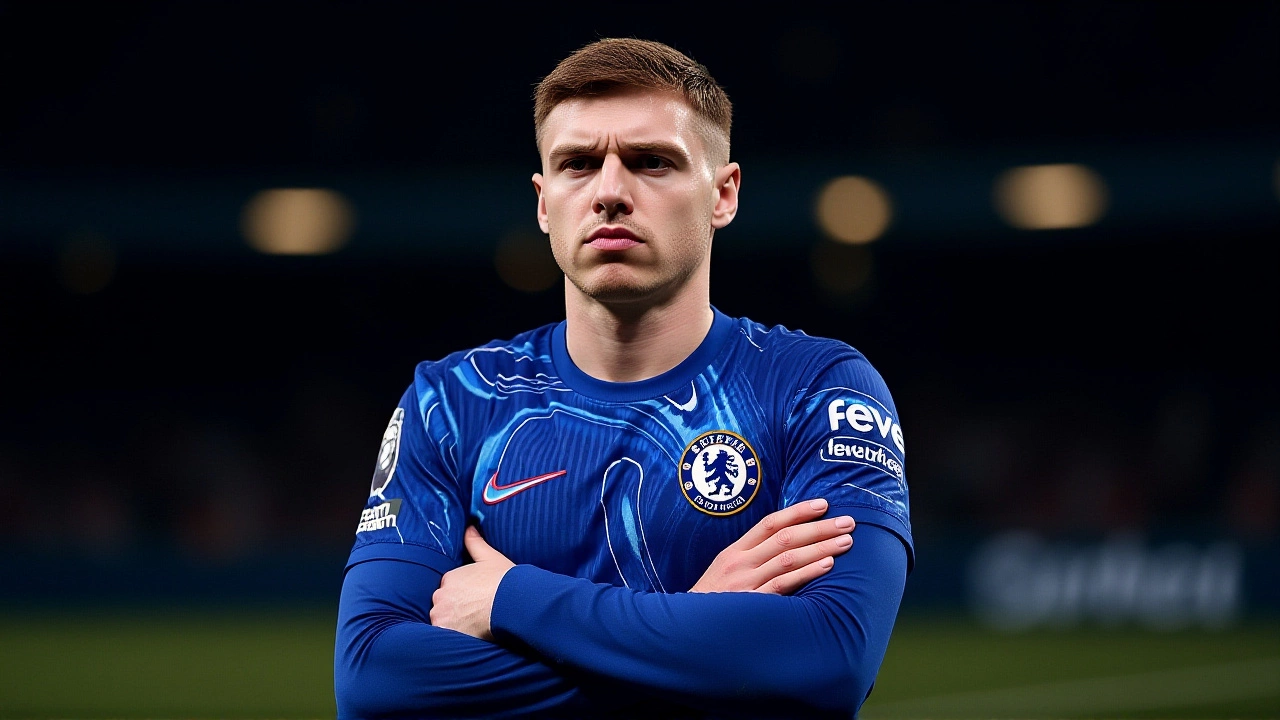Cole Palmer returns to training as Chelsea delays Champions League comeback
 Nov, 21 2025
Nov, 21 2025
When Cole Palmer stepped onto the grass at Cobham Training Centre in late November 2025, it wasn’t a celebration — it was a quiet, cautious milestone. The 22-year-old Chelsea midfielder, once the engine of the team’s attacking play, had been absent for nearly three months. His return to light training marked the end of a frustrating, self-inflicted injury saga that exposed flaws in how one of the Premier League’s brightest young talents was managed. And while fans are thrilled he’s back on the pitch, the real question isn’t whether he’ll play — it’s when he’ll be fit enough to matter.
How a Good Player Became a Cautionary Tale
Palmer’s injury didn’t happen in a collision or a bad tackle. It festered. The original groin strain occurred during the FIFA Club World Cup in late 2025, but Chelsea’s medical team — led by head physiotherapist Jon Harley — didn’t fully diagnose the severity. Instead, they rushed him back. Within days, he was subbed on against Brentford Football Club at Stamford Bridge. Then, three days later, he started against FC Bayern Munich. Then, just 48 hours after that, he played 90 minutes at Old Trafford against Manchester United Football Club. Three matches. One week. No recovery time.It was reckless. And it backfired spectacularly. By the end of the week, Palmer was limping off the pitch, clutching his groin. The injury didn’t just return — it worsened. He missed the next six Premier League games and every training session since. The club’s reputation for player care took a hit. Fans began asking: Why did they push him so hard?
The New Approach: Patience Over Pressure
This time, things are different. According to Chelsea News sources on November 18, 2025, the medical staff has adopted a "zero-risk" protocol. Palmer is doing individual drills on the pitch — no contact, no sprints, no ball work with teammates. He’s not even allowed to watch full training. His progress is tracked daily, with biometric data fed into the club’s performance analytics system."The plan was always to ease him back with 30 minutes in a league game before the Barcelona match," said a source close to the medical team, speaking anonymously to The Pride of London. "But those plans are just arriving too soon. He’s not there yet. And we’re not going to risk it again."
That means the originally targeted UEFA Champions League return against FC Barcelona on March 4, 2026, is now in serious doubt. The more realistic window? The North London derby against Arsenal Football Club at Stamford Bridge on March 9 — five days later. That’s not just a tactical advantage — it’s a safety buffer. If he’s not ready by then, the club will delay further. No excuses.
Why This Matters Beyond the Pitch
Palmer isn’t just a midfielder. He’s Chelsea’s most creative force this season. In the 11 matches he played before the injury, he contributed 7 goals and 5 assists — numbers that rival top-tier Premier League playmakers. His absence has forced Enzo Maresca to reshuffle the entire midfield, relying on older, less dynamic players like Conor Gallagher and Moisés Caicedo. The team has dropped points in key fixtures. The Champions League knockout stage is no place for guesswork.And then there’s the national team angle. Though the original report mistakenly referenced Thomas Tuchel and a 2025 World Cup — a clear error, since Tuchel isn’t England’s manager and the World Cup isn’t held in 2025 — the underlying truth remains: Palmer’s form could make him a lock for the 2026 World Cup squad. But if he’s sidelined for another three months, he risks falling out of the conversation entirely. England’s coaching staff is watching. So are scouts at Bayern, Real Madrid, and Manchester City.

What’s Next? The Timeline Is Now Clear
Here’s the projected return path — based on current updates and club protocol:- November 23–24, 2025: Misses Premier League match (confirmed)
- December 2025: Expected to rejoin light group training; no competitive action
- January 2026: Possible return to full training, but unlikely to play
- February 2026: Potential appearance in FA Cup or EFL Cup — if deemed safe
- March 4, 2026: UEFA Champions League vs. Barcelona — now unlikely
- March 9, 2026: Premier League vs. Arsenal — most probable return date
Even if he returns in March, he’ll need at least four games to regain match sharpness. That means his impact on Chelsea’s Champions League campaign will be minimal — unless they reach the final. But for a club that spent £70 million on him in 2023, every minute counts.
Behind the Scenes: The People and the Pressure
While Palmer recovers, other names are swirling. Tyrique George, a young squad player, has been filling in during interviews, offering light-hearted insights into team dynamics — a small but telling sign of how much the squad misses Palmer’s presence. Meanwhile, rumors about Kenan Yildiz — the Juventus winger — continue to circulate. Though Chelsea’s January transfer window activity is expected to focus on defensive reinforcements, Yildiz’s name keeps appearing in reports as a long-term alternative if Palmer’s recovery falters.The club’s ownership — Todd Boehly and Clearlake Capital — aren’t saying much publicly. But insiders say they’re frustrated. This isn’t just about one player. It’s about a pattern. Injuries to Palmer, Nkunku, and Chilwell over the last 18 months have cost Chelsea over £150 million in lost performance and transfer value. They’re demanding better protocols. And they’re not alone.
Frequently Asked Questions
When is Cole Palmer likely to return to competitive play?
The most realistic return date is March 9, 2026, against Arsenal at Stamford Bridge. While the March 4 Champions League match against Barcelona was initially targeted, Chelsea’s medical team has ruled out that fixture due to insufficient recovery time. A return before March is now considered too risky, and the club is prioritizing long-term health over short-term fixes.
Why did Chelsea rush Palmer back the first time?
Chelsea’s staff reportedly underestimated the severity of Palmer’s initial groin strain during the Club World Cup. With the Premier League title race heating up and Champions League momentum building, management pushed for his return despite medical concerns. The result? Three matches in seven days — a decision now widely criticized as a textbook example of poor injury management.
Is there a risk this injury could recur?
Absolutely. Groin injuries have a 30-40% recurrence rate in elite athletes, especially when returned to play too soon. Palmer’s previous setback proves the vulnerability. This time, Chelsea is using MRI scans, GPS tracking, and muscle elasticity tests daily to monitor his readiness — a level of scrutiny not seen before in his career.
How has Palmer’s absence affected Chelsea’s performance?
Chelsea have lost 3 of their last 6 Premier League games since Palmer’s injury, scoring 40% fewer goals. His creativity and late runs into the box were central to their attacking structure. Without him, the team has become predictable, relying heavily on set pieces and counterattacks — a style that struggles against top-tier defenses.
Could Cole Palmer still make England’s 2026 World Cup squad?
Yes — but only if he plays regularly between March and June 2026. England’s manager, Gareth Southgate, is known to track Premier League form closely. If Palmer misses more than half the season, he’ll likely be overlooked in favor of players like James Maddison or Phil Foden, who are both fit and consistently performing. His international future depends entirely on his club availability.
What’s the long-term impact on Chelsea’s transfer strategy?
Chelsea are now more cautious about signing players with injury histories — especially those under 25. The Palmer situation has made them rethink their entire recruitment model. They’re investing in data-driven medical assessments and longer trial periods. Rumors about Kenan Yildiz may be a sign they’re preparing for future contingencies, not just immediate needs.